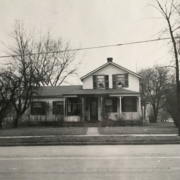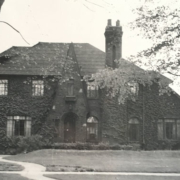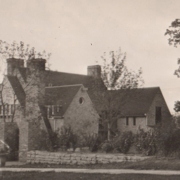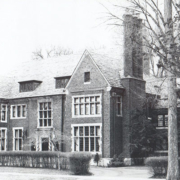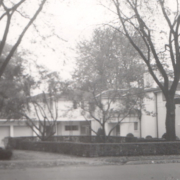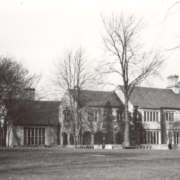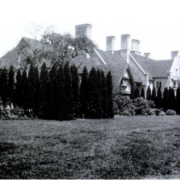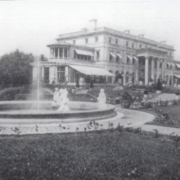Historical Architecture of Grosse Pointe – From Across The Pond – A Visit to Downton Abbey.
Step into the world of Downton Abbey and you are greeted by much loved characters such as Robert, Earl of Grantham; Cora, Countess of Grantham, Lady Edith Crawley; Charles Carson the butler and the head housemaid Anna Bates. But when the cameras aren’t rolling Downton Abbey reverts back to its real name – Highclere Castle – home to Lord and Lady Carnarvon.
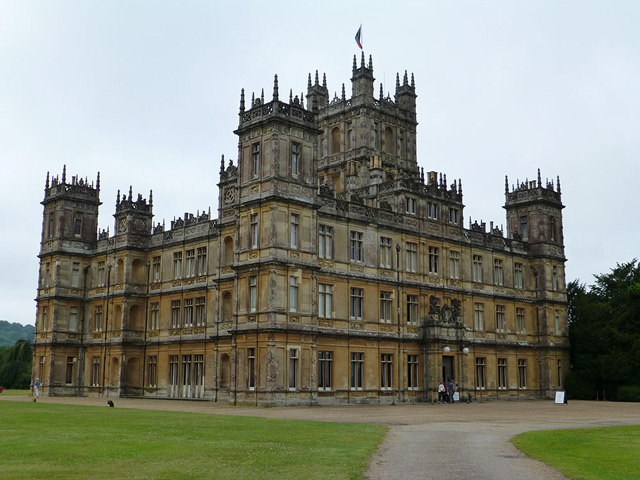
Highclere Castle is one of the most beautiful Victorian Castles in England; set within 1,000 acres of magnificent parkland it is just under 70 miles from London. The Castle has been home to the Earls of Carnarvon since 1679.
History of the Castle
The current house stands on the site of an earlier house, which was built on the foundations of a medieval palace. The original house was a classical Georgian Mansion and looked very different from how the current house looks today, as the image below shows.
In 1838 the 3rd Earl of Carnarvon commissioned renowned architect Sir Charles Barry to transform the home he had inherited and create a spectacular Italianate Castle. Sir Charles had just completed designing the Houses of Parliament in London, and there are many noticeable similarities between the two buildings. Barry had been inspired to become an architect by the Renaissance architecture of Italy and he described his work at Highclere as predominantly Anglo-Italian. He was a practical engineer with an extensive knowledge of building, and was credited for popularizing Italianate architecture in Britain.
The 3rd Earl of Carnarvon wanted his new home to impress the world, and reflect the energy and change that was sweeping the country as part of Queen Victoria ascendance to the throne. Faced in stone, the castle is over 120,000 square feet. To put this into context the Edsel and Eleanor Ford House is 30,000 Square feet, and set on 86 acres.
The exterior of the north, east and south sides were completed at the time of the 3rd Earls death in 1849, however the majority of the interior, and the west wing were incomplete at the time of Sir Charles Barry’s death in 1860. The 4th Earl commissioned Barry’s assistant Thomas Allom to finish the interior of the castle who ensured the Italian Renaissance theme was retained in the majority of the rooms. The interior was finally completed in 1878.
The new Castle dominated the local surroundings and cut a dramatic shape in the local skyline. It is reported, that once built, the Castle became a center of political life during the late Victorian era.
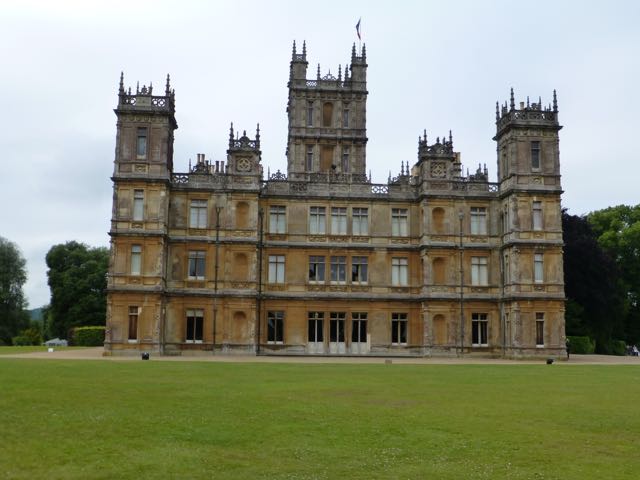
Arriving at the Castle
Upon arriving at the Castle you are overwhelmed by the sheer size and impressive structure of the residence. The exterior of the home is covered with some wonderful carvings and motifs, which are particularly evident above the main entrance, which includes the Roman numerals depicting the year when the first stone was laid – 1842. The level of detail in the carvings on the towers is also incredible, and there are numerous intricate carvings of dragons below many of the second floor windows.
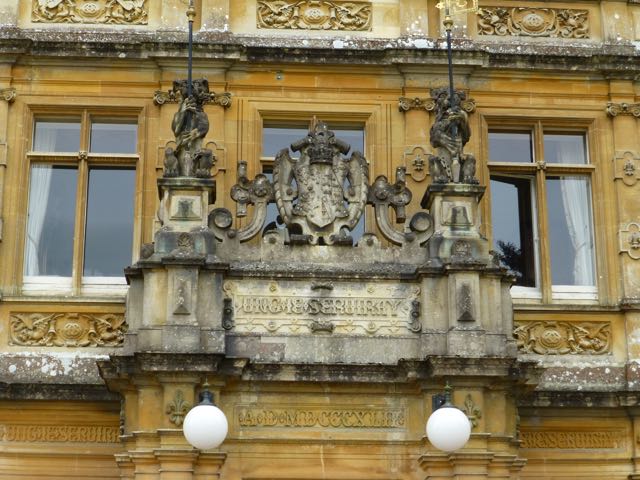
The Interior
If the exterior is grand, the interior takes your breath away. The Castle has a total of 300 rooms including 60 – 80 bedrooms. On entering the Castle you stand in the spectacular gothic entrance hall, with its marble columns and vaulted ceilings. As you enter the library the rich red curtains, coffered ceiling, and the wonderful dark mahogany sets the scene for the gilded bookcases and a collection of over 5,000 books. Barry designed the library, after his death it was completed by Thomas Allom.
The Music room features gilded panels and beautiful 16th century Italian silk embroideries that cover the walls. The drawing room is just as intricate, decorated by the 5th Countess of Carnarvon, the room is also decorated with green French silk, given to her by her father, Alfred de Rothschild, in1895. The drawing room also features a grand marble fireplace along with some beautiful gold detailing above the doors, the windows and on the ceiling.
Another room that is wonderfully decorated in green is the morning room. It was redecorated in the 1980’s to compliment a painting that is the main feature of the room, including the ceiling which is also painted in green and includes many intricate details in white. The light in this room is stunning and really brings the green too life.
The saloon forms the heart of the castle and was designed to resemble a medieval English Great hall. It has a magnificent 50 feet high vaulted ceiling and a grand sweeping oak staircase that connects the saloon with the galleried bedrooms. The main feature of this room is the gigantic stone fireplace, and the glorious stone arches. It is truly stunning.
As you would expect, the dining room contains some wonderful decorative features including a number of portraits, dominated by a painting of Charles 1st, from the leading court painter in England at the time, Anthony Van Dyck. The room also features a large carved fireplace with intricate dragon detailing, large windows along with magnificent detailing on the 16 ft high ceiling.
Nearly every room (open to the public) is flooded with huge amounts of light, the colors are vibrantly rich and the ceilings are a work of art. Unfortunately photo’s are not permitted to be taken inside the Castle.
The Gardens
Upon exiting the Castle you are greeted by stunning views and meticulously maintained gardens, which have existed since medieval times. The garden features some amazing hedges, glorious flowerbeds along with a sea of lavender next to the brick archways that enclose the garden. Much of the park visible today is the result of collaboration between the 18th century landscape architect, Capability Brown, and the 1st Earl of Carnarvon.
Highclere Castle is a wonderful example of Victorian architecture at its very best. While it is known as the setting for Downton Abbey, there is so much more to know and learn, for it is a residence steeped in history, the home of the 8th Earl and Countess of Carnarvon, and the seat of the Carnarvon Family for over 300 years.
For more information please visit Highclerecastle.co.uk or to follow the anecdotes and stories of life at the Castle from the Countess of Carnarvon click here to follow her blog.
Written by Katie Doelle
© 2015 Katie Doelle


